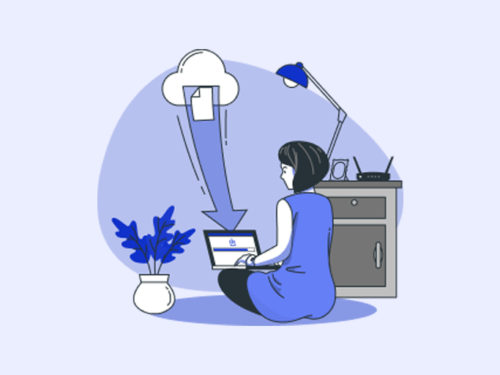

Chat Etiquette in the Workplace. Chat at Work Guide
With the working environment shifting towards remote workplaces, chat-based workspace apps with instant messaging functionalities have rapidly seen a boom with this communication method.
Using instant messaging at work allows workers to utilize dynamic tools that encourage and allow peers to easily collaborate across various teams, tasks and management groups.
Even if you perform your work duties within the same room as your colleagues, across the other side of the building, or even in a different country, engaging with workmates in this ‘new normal’ environment can improve your wellbeing and increase productivity.
Why does professional communication and chat etiquette matter?
Current technologies with today’s chat and instant messaging tools provide a range of exciting offerings including file sharing, task management, collaboration in real-time for private messages, interactive online meetings, and conferencing with video options.
Interestingly, the avalanche of communication options out there has been responsible, in various circumstances, to foster misunderstandings in the workplace, low morale, miscommunications, and other business associated risks. Regardless of the role you are tasked with within the organization, familiarizing yourself with the company’s online meeting etiquette is essential.
Carefully managing your meetings, channels and IMs within the workplace will assist you and your coworkers to reduce and minimize distractions whilst boosting efficiency and your overall satisfaction within your job role.
By working towards having a respectful manner by which you conduct your chat etiquette within the workplace will cultivate inclusivity, accessibility, and fair-mindedness with your associates.
Instant messaging at work
Things to consider before pinging your colleagues at work. The following presents some of the most recommended practices when it comes to sending IM messages to your workmates using your workplace chat platform:
Choosing the correct method. How and when should you decide whether to IM, email, or initiate a meeting invite? Make your choices depending on the recipient, subject-matter, or other workstreams. The following points will assist you as a rough guide what method to use before deciding which approach to take.
- When collaborating with in-house teams and ongoing teamwork scenarios – use chat or IM. In situations where you are describing and discussing projects with external parties, email communications are the most practical method.
- In situations where there is frequent back and forth email threads with external parties, consider moving these conversations to IMs to reduce email clutter and save time.
- If IMs start becoming hard to follow or the communication is unclear, suggest moving the conversation to a voice call if clarity is needed – a voice call is usually the fastest way to resolve any barriers which may have been presented with IM chats.
Set up your notifications and respond in a timely manner
Professional chat etiquette means you’ll need to configure and set up your notifications so you can keep on top of your messages and mentions and respond accordingly. Make use of the various app features so you can bookmark, pin or save your important chat conversations.
Become accustomed with accessibility recommendations
Take initiatives by being inclusive to ensure all team members within chat conversations are heard and acknowledged by practicing effective communication etiquette. By taking these initiatives will help to ensure smooth teamwork partnerships perform to their best potential and can drastically improve workplace productivity.
Be restrained with your emotions
Most workplace chat apps include GIFS, Memes, and stickers. There’s no harm with instigating a bit of fun across your digital chats, a small amount of humor can go a long way. Try not to overstep the boundaries though and remember to only use workplace-appropriate emojis.
A good example of commonly used workplace gestures using emojis could include the thumbs-up emoji, which is often viewed similar to a “like” button and is a neat way to politely terminate a conversation faster and with less back and forth – send a thumbs-up to communicate that it’s “understood,” “sure,” or “no problem.” Using emojis to express “love,” “wow” or “angry” should be used less often in the work environment.
Adhere to your fellow team members availability status
Refrain from pinging a team member or colleague when they have their availability status set as unavailable – unless you have been specifically directed to do so. Always keep your eye on your own availability status and ensure its settings are correct to avoid being interrupted during a meeting or otherwise busy.
Professional etiquette for group chat
When it comes to IM group chat there are various recommendations that require unique chat etiquette. The following tips will assist in helping your group chats flow efficiently so you can stay on task:
Use the @mention (tagging) process to alert team members within the group when a response is required. Keep in mind that when you use tagging to alert other group members, tagging can be associated with being assertive or bossy so try not to tag team members (@mention) too frequently unless you feel it’s in an appropriate scenario.
Tagging new participants who are new to the group. New group members will receive a welcome notification, which will assist them to navigate back to the chat group in the future. Depending on which platform you are using, consider sharing the chat history with the newest members to help them catch up on the chat history or topic.
Group chat messages should be short and to the point. It’s important to ensure your messages are clear and adds value within the chat discussion topic.
Acknowledge received messages. This is when emojis can play a role in acknowledging receipt of a massage. Let them know you agree with messages by simply using the thumbs-up emoji.
Always consider your tone. As mentioned, keep your IMs to the point, but at the sometime, be mindful not to be discourteous.
Don’t be repetitive. If you’re not fully up to speed with the chat conversation history, and to spare the other members of having to answer the same questions repeatedly, try using the search feature to find answers before asking questions.
Give your group chat a name. By giving the discussion a name will allow you and other group members to locate and distinguish a particular chat group from other threads. Microsoft Teams is an ideal solution for group chat.
Appropriate etiquette for private chat messages
Using your workplace IM messaging features will help you and your workmates to stay alert if you need to send messages for high priority tasks. By using IMs between work colleagues to keep workflows in check, you’ll enhance working relationships.
Consider using the following communication etiquette tips for enhancing private chats:
Great for brainstorming and subsequent follow-ups. When a private chat with a team member starts moving towards bigger decisions and strategies, this may be the appropriate time to begin a new email thread or even a group chat discussion with your management team.
Skip the assumed greeting. Don’t assume you need to start every private chat with a typical greeting “Hey, how’s your day so far?” or “Do you have a few moments to spare?” While it would seem this is a polite manner to ask a question, the rules are a bit different when using IMs at work. Go ahead and lead right into your question, thus allowing your colleague to reply at a convenient time to them.
Don’t forget to have fun!
Chatting privately with your colleagues offers you the perfect opportunity to let your true personality shine through. On occasions, go ahead and release those special pet photo’s, show off a GIF or 2, or share a delicious recipe occasionally.
Online meetings and chat etiquette
Hosting meetings via online chat platforms has become the new normal for conducting business meetings. Consider adopting the following guidelines to sharpen your online meeting etiquette:
Use the mute feature when joining the chat. Make sure you check the settings for your camera and microphone before you enter the online meeting. If you join a meeting without checking your settings, this may be off-putting to the other group members if there are unexpected background noises or footage.
When appropriate use video. Even though video streaming will use additional internet resources, you and the attendees are more likely to experience a more fulfilling meeting and make better connections with your peers.
Remove visual disturbances. Set yourself up in front of a blank or plain wall, window covering or some other non-descript backdrop. If you need to make use of virtual backgrounds during a presentation or online meeting, do so fittingly and ensure the background is not too busy or poorly implemented.
Utilize the text chat feature to get involved. There are steps you can take to reduce crosstalk and interference in the meeting. Share resources or ask questions using the chat feature to avoid unnecessary interruptions. Sharing valuable information also creates a collection of additional resources for other users to access within the chat history for future reference.
Beware when screen sharing. Learn how to expand your screen, and how to zoom in to important details or images so it’s clear to the meeting attendees what it is you are sharing.
Increase your knowledge with instant messaging at work
Taking the time to navigate online meeting tools and appropriate chat etiquette in a working environment will help you to enhance, collaborate and engage with your team, regardless of if you are working collectively in a virtual office or side by side.
Take a guided tour here to learn more about the full set of impressive features the Microsoft chat-based application makes available to its users to help teams call, meet and chat for seamless collaborations.






